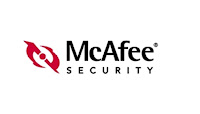Safe mode is a diagnostic mode used to trace and solve computer problems that cannot be fixed in the regular booting mode. Booting your computer in safe mode prevents many programs and malicious tools from automatically loading up during startup. Safe mode will allow you to delete a virus successfully because it stops it from running in the background. A powerful virus can easily dodge your antivirus and can prevent its detection when you run a virus scan. It is because the virus is running like any other normal application or process in the background when your computer is in the normal mode.
Suppose your system doesn’t boot up correctly, chances are that it may have a virus. It is recommended that you start your computer in safe mode and run a virus scan. When your computer is the safe mode, it will not load non-essential processes and non-core components. In other words, only the minimum necessary programs will load. Follow the given steps to run virus scan in Safe mode.
Step1: If your computer is on then shut it down and then power it on.
Step2: When power comes on your computer and then repeatedly start pressing the F8 key.
Step3: In the Windows Advanced Options Menu screen, use the Down arrow key to select Safe Mode and press Enter. Once you select Safe Mode, the computer will continue booting up.
Step4: Windows will boot to the logon screen. When logon screen comes up, click "Administrator" and enter your password to log on if you have one. Windows will boot up.
Step5: Click on your antivirus program and open it. Follow the onscreen steps to run a virus scan.
Step6: After the virus scan is completed, delete all detected viruses.
Step7: After completing all the steps, restart your computer in normal mode.
Note: To get online virus removal support ,you can reach online technical support service desk of V tech-squad at their Toll Free No +1-877-452-9201.
Suppose your system doesn’t boot up correctly, chances are that it may have a virus. It is recommended that you start your computer in safe mode and run a virus scan. When your computer is the safe mode, it will not load non-essential processes and non-core components. In other words, only the minimum necessary programs will load. Follow the given steps to run virus scan in Safe mode.
Step1: If your computer is on then shut it down and then power it on.
Step2: When power comes on your computer and then repeatedly start pressing the F8 key.
Step3: In the Windows Advanced Options Menu screen, use the Down arrow key to select Safe Mode and press Enter. Once you select Safe Mode, the computer will continue booting up.
Step4: Windows will boot to the logon screen. When logon screen comes up, click "Administrator" and enter your password to log on if you have one. Windows will boot up.
Step5: Click on your antivirus program and open it. Follow the onscreen steps to run a virus scan.
Step6: After the virus scan is completed, delete all detected viruses.
Step7: After completing all the steps, restart your computer in normal mode.
Note: To get online virus removal support ,you can reach online technical support service desk of V tech-squad at their Toll Free No +1-877-452-9201.




